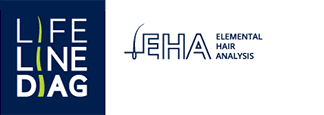 India, a land of diverse cultures, traditions, and cuisines, is also characterized by significant variations in dietary patterns across its vast expanse. However, these dietary diversities often contribute to distinct mineral imbalances in our bodies, leading to a range of health issues. One way to identify these imbalances is through Hair Tissue Mineral Analysis (HTMA), a diagnostic tool that offers insights into our body’s mineral status and toxic metal accumulation. This article aims to shed light on how our dietary habits can influence these mineral imbalances, and how HTMA can play a crucial role in understanding and correcting them.
India, a land of diverse cultures, traditions, and cuisines, is also characterized by significant variations in dietary patterns across its vast expanse. However, these dietary diversities often contribute to distinct mineral imbalances in our bodies, leading to a range of health issues. One way to identify these imbalances is through Hair Tissue Mineral Analysis (HTMA), a diagnostic tool that offers insights into our body’s mineral status and toxic metal accumulation. This article aims to shed light on how our dietary habits can influence these mineral imbalances, and how HTMA can play a crucial role in understanding and correcting them.
INDIA’S DIETARY LANDSCAPE
India’s nutritional landscape is as diverse as its people. The northern region largely consumes wheat-based diets, while rice dominates the southern and eastern parts of the country1. Simultaneously, certain areas, especially tribal belts and mountain regions, rely heavily on millets and other locally available produce2.
However, with the onset of urbanization, dietary patterns have been shifting towards increased consumption of processed and fast foods3. The National Family Health Survey 4 (2015-16) highlights that only 47% of the households consume dark green, leafy vegetables daily, and a meager 6.3% consume fruits.
THE HEALTH CONSEQUENCES
Such nutritional choices can contribute to mineral imbalances in our bodies. For instance, an excess of processed foods, typically high in sodium, can lead to a sodium-potassium imbalance. This imbalance is a risk factor for hypertension, a public health challenge that affects nearly 33% urban and 25% rural Indians.
On the other hand, deficiencies of essential minerals like iron, iodine, zinc, and vitamin A are rampant in India. Over two-thirds of Indian children under five are anemic, a condition predominantly caused by iron deficiency.
THE ROLE OF HTMA
This is where Hair Tissue Mineral Analysis (HTMA) comes into play. HTMA is a non-invasive diagnostic tool that measures the levels and ratios of essential minerals and toxic metals in our body, using a small sample of hair.
HTMA can provide an accurate picture of our mineral status over an extended period, unlike blood tests, which only reflect the transient state of the body. This long-term view can help us understand the impact of our dietary habits and enable timely interventions to correct any imbalances.
With HTMA, we can pinpoint potential nutritional deficiencies or excesses linked to our dietary choices. For example, it can detect the accumulation of heavy metals like lead, arsenic, and mercury, commonly found in contaminated water and certain food items. According to a study by Pure Earth and UNICEF, one in three children – up to 800 million globally – have blood lead levels greater than five micrograms per deciliter, a level which can significantly damage children’s health and development.
CONCLUSION
While dietary diversity is a hallmark of our Indian culture, we need to understand how these patterns influence our health through mineral imbalances. HTMA can provide an effective means of monitoring these imbalances and guiding us towards healthier dietary choices, ultimately contributing to the improved health of our Indian population.
Lifeline Diag
Scientific references:
1.https://www.ncbi.nlm.nih.gov/pmc/articles/PMC4928662/
2.https://www.researchgate.net/publication/343100711_Dietary_Diversity_and_Nutritional_Status_among_Adults_in_South_Asia_A_Systematic_Review
3.https://www.ncbi.nlm.nih.gov/pmc/articles/PMC














